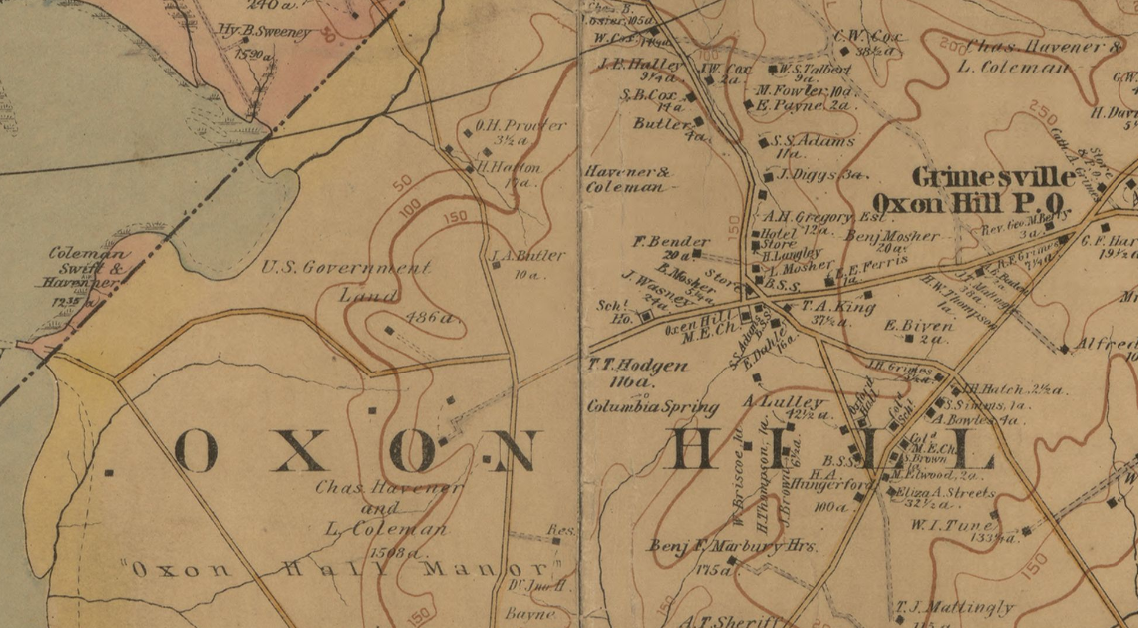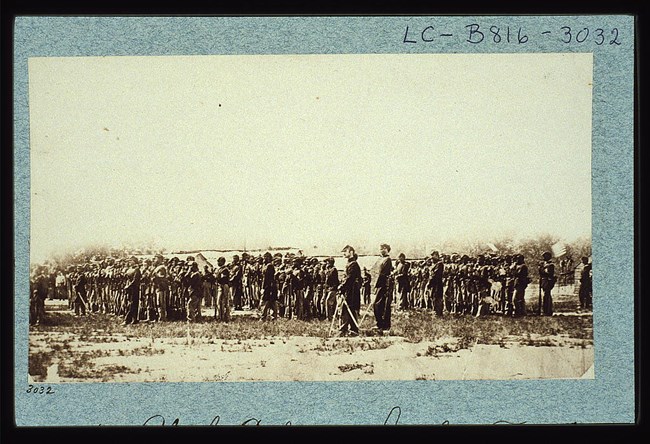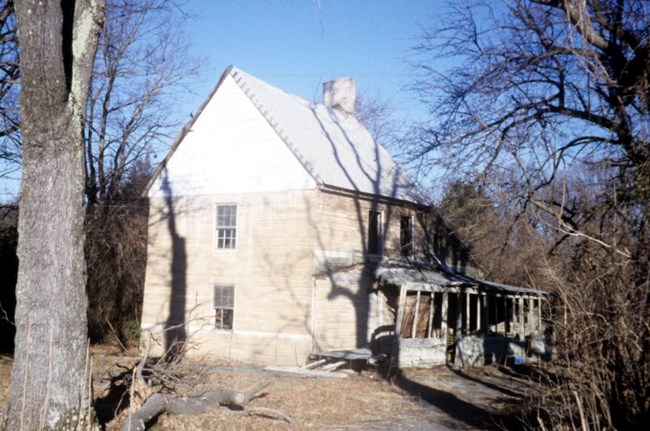
Adjacent to the land marked 'US Government Land', now Oxon Cove Park, are the properties of the Butler, Hatton, and Procter families. (Courtesy of Library of Congress)
In the 19th century, three free Black families lived right along the modern border of Oxon Cove Park: the Hattons, Butlers, and Proctors.

Photographed by Mathew Brady (Library of Congress) The HattonsHenry Hatton acquired 21 acres of Mt. Welby from Joseph H. Bowling in 1868. Hatton, a self-employed blacksmith, and his wife Margaret had six children. Their eldest sons Henry and George joined the 1st U.S. Colored Troops and fought for the Union in the Civil War. The two brothers were some of the first to enlist in the new USCT. Henry served in Company E and was promoted to corporal before being appointed as a bugler. George served in Company C and rose to First Sergeant. In his time in the USCT, George wrote a number of letters to the Christian Recorder newspaper, providing us with excellent first-hand accounts of his life and the experiences of the USCT.
Though George was wounded in the leg by a Minnie ball, both he and Henry survived the war. They discharged from the US Colored Troops just as they had enlisted, together.

Julie Darsie The ButlersImagine what has taken place in this home, built by the Butlers, a family of free blacks, in 1853. How did its inhabitants interact with their enslaved neighbors at Oxon Hill Manor? How were they impacted by the Civil War? How did they celebrate emancipation? By 1850, Maryland was home to more free blacks than any other state in the Union. 1,138 of those individuals settled in Prince George’s County where they made up roughly 5% of the population. One family that moved to the county was the Butler family. Henry Alexander Butler and his wife Julia moved their family of 6 to a piece of land along the present day western border of Oxon Cove Park. They made a home, established a farm, added to their family, and expanded their wealth. Henry Butler became a leader in the community and the family socialized with prominent black Washingtonians. The Butler House remained in the hands of the family for 150 years. In 2005, it was listed on the National Register of Historic Places as a “rare surviving example of a documented pre-Civil War house inhabited by a free African American family”. After years of abandon, the Butler House has deteriorated to ruin. The property left the hands of the Butler family in 2019 and the building suffered a major collapse sometime after. The ProctorsLittle is known about the Proctor (or Procter) family beyond what is recorded by the census. What that tells us is that the Proctors owned two homes on 3 ½ acres and are employed as laborers. |
Last updated: December 2, 2021
